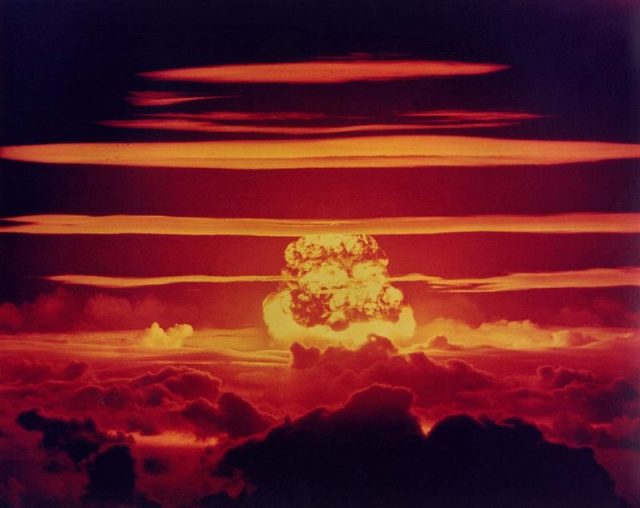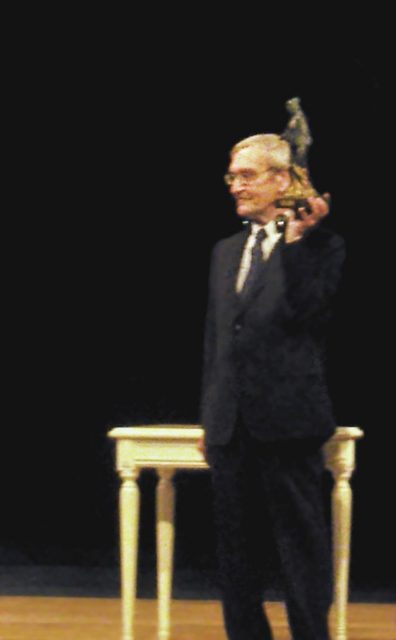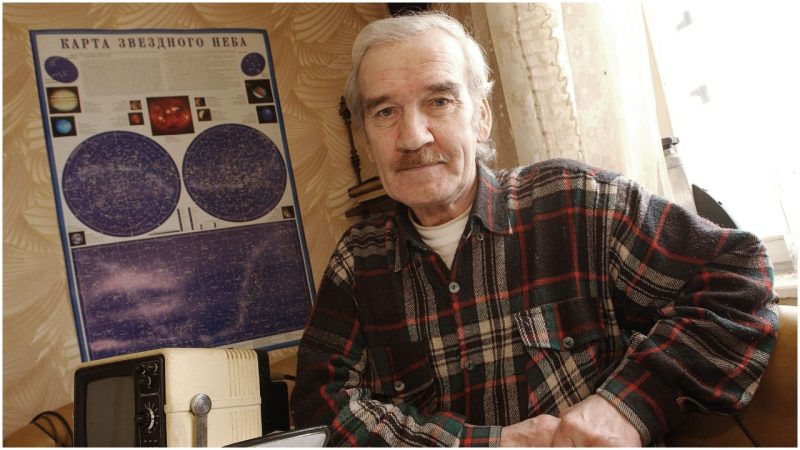During the Cold War, the United States and the Soviet Union were highly paranoid and both countries invested in building nuclear weaponry. While neither side wanted an actual war to break out, they prepared just in case. In such a state of paranoia, in 1983, believing that a spy plane had crossed over their airbase, the Soviets shot down a Korean Air commercial flight. All 269 people on board were killed, including a congressman from Georgia, after which President Ronald Reagan declared the Soviet Union an “evil empire.”
But things were just as complicated on the other side. It is difficult to determine a wrongful side in the Cold War and justify the other, as both countries were equally responsible. And both leaders, Yuri V. Andropov and Ronald Reagan, equally paranoid. The unfortunate thing is that paranoia spread like a virus among people, including officials set in position to observe the sky, the sea, and the land for any abnormal behavior, i.e., possible attack from the enemy. And that time almost came in Russia. But Stanislav Petrov saved the day. And his country. And the world, for that matter.
Petrov was a lieutenant colonel in the Soviet air defense force. In 1983, he was working on “Oko,” or Eye, the code-name of the Soviet early-warning system for detecting the launch of nuclear attack by the Americans, in the secret city of Serpukhov-15. The system’s command center was located underneath the city in a massive bunker which Petrov helped design. On the night of September 26, he was the duty officer monitoring the controls when the alarms went off and all the computers in the bunker signaled that five Minuteman intercontinental ballistic missiles had been launched from an American base, and a few seconds later, four more missiles were detected.

Petrov’s duty was to report the incident to his superiors, who would transfer the message to the general staff of the military and they would consult with Yuri Andropov about a counterattack. There were only 25 minutes between the launch and the detonation of the missiles, and Petrov was paralyzed. In a 2013 interview with the BBC, he said: “There was no rule about how long we were allowed to think before we reported a strike.
But we knew that every second of procrastination took away valuable time, which the Soviet Union’s military and political leadership needed to be informed without delay. All I had to do was to reach for the phone, to raise the direct line to our top commanders–but I couldn’t move. I felt as if I was sitting in a hot frying pan.”
However, Petrov decided to report the alert as a computer malfunction. He told the Washington Post in 1999: “I had a funny feeling in my gut, I didn’t want to make a mistake. I made a decision, and that was it.” Nobody would like even to imagine how the world would have been today if Petrov didn’t act on his intuition, which proved to be correct. Apparently, it was the sun’s reflection off the tops of high-altitude clouds that the satellite mistook for a missile launch. Petrov saved his country from a highly destructive war that would have been fought with nuclear weapons. Hence, he saved the world from that scenario.
The first one to hear about Petrov’s decision to call the alarm a malfunction was Yury Votintsev, then-commander of the Soviet Air Defense’s Missile Defense Units. Votintsev praised Petrov for his “correct actions” and promised him a reward, but instead, Petrov was reprimanded due to improper filing of paperwork–he didn’t describe the incident in the war diary. A year later, in 1984, Petrov retired from the military and started working as a senior engineer at the research institute which created the warning system.

His role in the 1983 Soviet nuclear false alarm incident was mentioned nowhere until 1998, when Colonel General Votintsev, in retirement at the time, mentioned Petrov in his memoirs. It was then that the world recognized Stanislav Petrov as “the man who saved the world from possible nuclear war.”
In 2006, Petrov received an award from the Association of World Citizens, and in 2013 he won the Dresden Peace Prize. In 2014, he was the subject of the documentary-drama The Man Who Saved the World by director Peter Anthony. Petrov died in May 2017, at the age of 77, but his death was not widely reported until September 2017. Besides all the recognition and awards, Petrov believed that all he did that one night in 1983 was simply doing his job.
